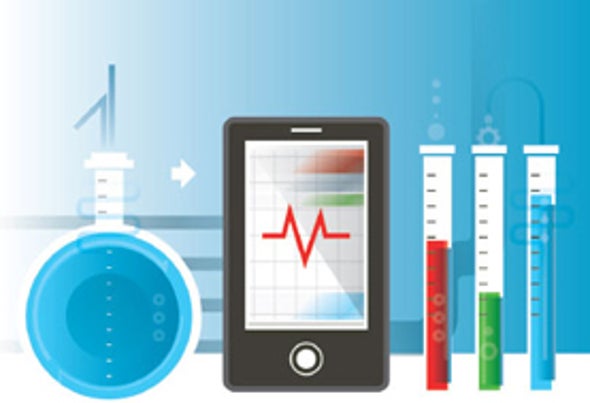A Cardiologist Would Like to Have the Capability to Continuously Track in Real Time via Internet

As a volunteer in a trial of mobile health technology, I can attest that it's incredibly cool to pick up your iPhone, fire up an application to monitor your heart rate and rhythm, and then beam your ECG reading to a cardiologist halfway around the globe. As a physician-scientist, I also know that cool technology is not necessarily synonymous with good science or sound health practices and that therein lies a challenge.
The use of cell phones and wireless sensors to gather and access health data has grown quickly in recent years. Popular mHealth apps are used for counting calories, gauging nutrition, tracking workouts, calculating body mass index and quitting smoking. These worthy efforts pale next to the potential of mHealth to aid in medical research and health care.
Mobile devices offer remarkably attractive low-cost, real-time ways to assess disease, movement, images, behavior, social interactions, environmental toxins, metabolites and a host of other physiological variables. Many mHealth technologies could be put to highly innovative uses in biomedical research; at the same time, biomedical research could help build the foundation of evidence that so many mHealth applications currently lack.
Because mobile devices are miniaturized and require little energy to operate, they have the power to bring the research laboratory to the patient in ways never before possible. For instance, clinical trial participants can avoid the inconvenience of visiting research facilities, writing down their daily activities or wearing clunky monitors. Scientists would also get higher-quality data because written diaries and questionnaires about exercise, diet, pain, and so forth, are notoriously unreliable. Real-time continuous biological, behavioral and environmental data can greatly improve understanding of the underlying cause of disease. Combining mHealth data with GPS data could also lead to early detection and warning systems for outbreaks of illnesses related to environmental exposures or infectious agents.
Wireless sensors could help scientists keep track of sleep patterns at home, instead of their having to rely on lab-based studies or self-reporting. Doctors could monitor blood pressure during daily activities, which is when it matters most, rather than in a clinic. Washable tattoos embedded with nanosensors could take blood glucose and sodium readings for transmission via a smartphone.
To make all this happen, health researchers, technology developers and software designers must pull together to find ways of evaluating new technologies. The National Institutes of Health is working to build the interdisciplinary research capacity needed to establish an evidence base for the benefits and risks associated with mHealth technologies.
Maintaining privacy and security of health data is a challenge that calls for research. How do we protect trial participants and ordinary consumers without adversely affecting research and quality of care? Who will set rules for privacy of mHealth data? Who will provide protections if privacy is breached?
We must also learn how people are actually using mHealth in their everyday lives. I suspect that, right now, the majority of users are much like me, treating their new apps as gee-whiz toys rather than as valuable tools for improving their health. I am convinced, however, that the real potential of mHealth lies with much more committed users, such as the children with type 1 diabetes who took part in a yearlong, case-control study of wireless technologies to monitor and manage blood glucose levels. That study, published in Diabetes Care, showed that youngsters who used the automated system had significantly better glycemic control and diabetes self-management skills than those who did not. Now that's an mHealth moment worth getting excited about.
SCIENTIFIC AMERICAN ONLINE
Comment on this article at ScientificAmerican.com/jul2012
This article was originally published with the title "How to Fulfill the True Promise of mHealth" in Scientific American 307, 1, 16 (July 2012)
doi:10.1038/scientificamerican0712-16
Source: https://www.scientificamerican.com/article/real-promise-mobile-health-apps/
0 Response to "A Cardiologist Would Like to Have the Capability to Continuously Track in Real Time via Internet"
Post a Comment